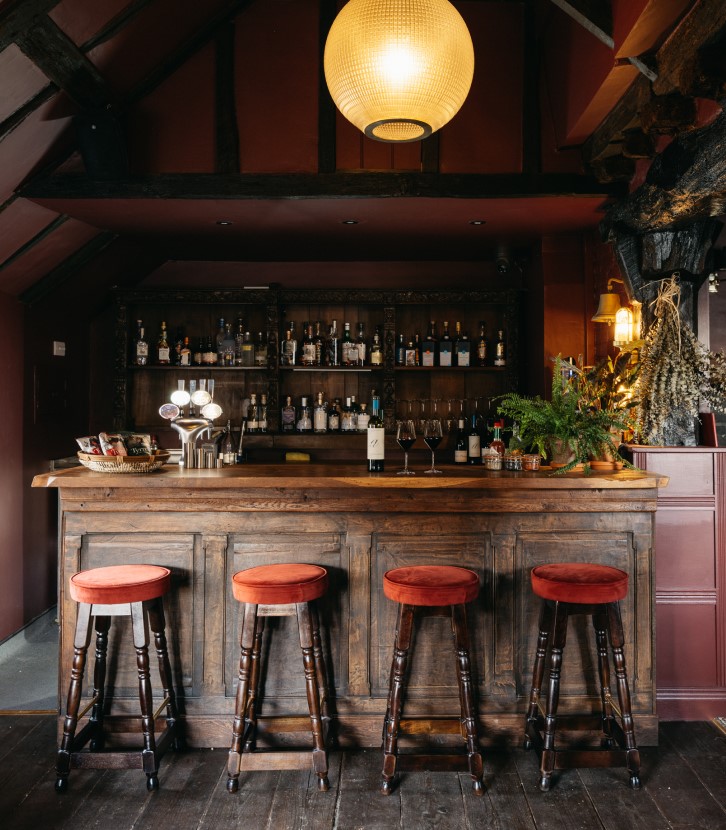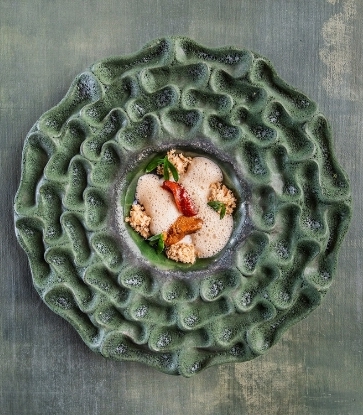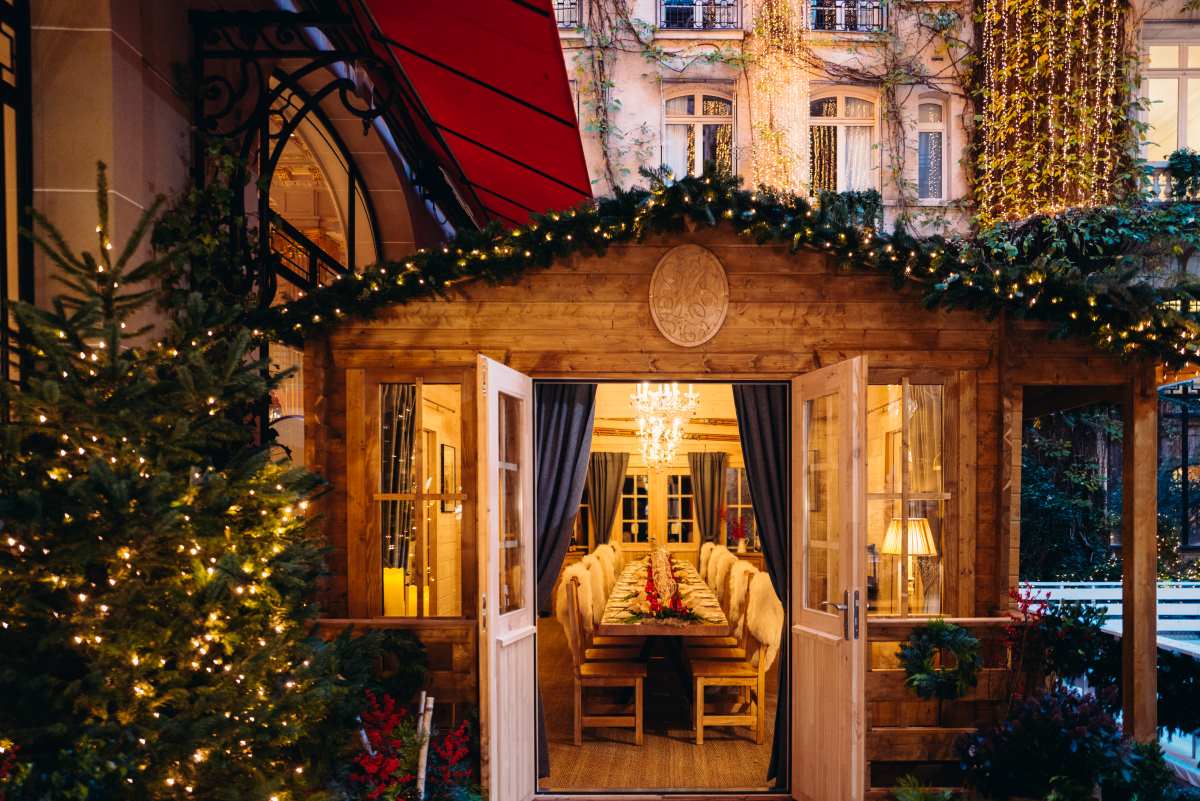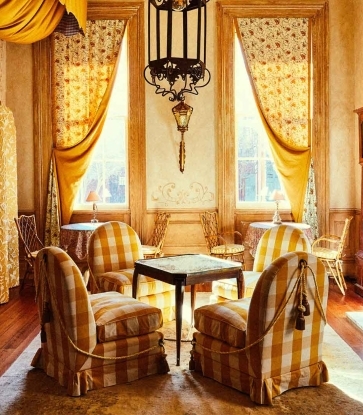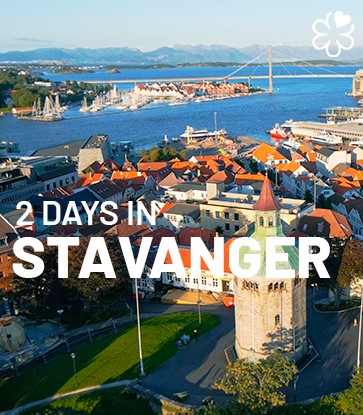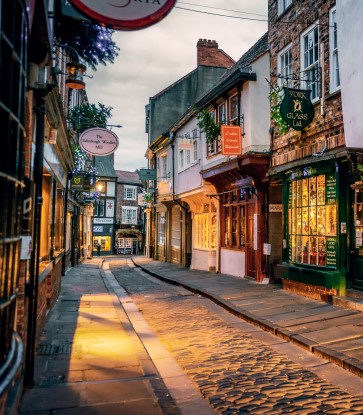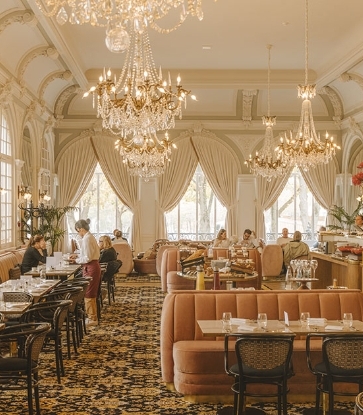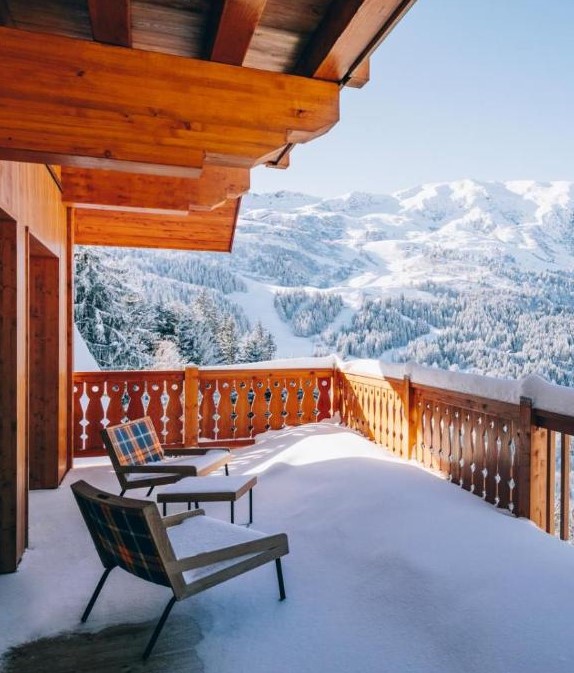Find our Inspection team's official review of Wilmina Hotel, here. Below, one writer shares her personal journey with the dark history and bright new present at this One Key hotel in Berlin.
I feel immediate anticipation as I ride the escalator up to the S-Bahn line 7 at Berlin's main train station. It takes just nine minutes to travel from here to Berlin-Charlottenburg, passing the Spree River, the Victory Column and Zoologischer Garten to find the transformed prison, abandoned for 27 years before becoming the Wilmina Hotel. Just this fall, it earned One Key from MICHELIN Inspectors in their very first list of hotel honors for Germany.
This is West Berlin. Not where Berliners often expect a project like this one, more commonly seen in the former East than the more developed West. “In fact, it was hard to imagine that there was still such a place to discover here in West Berlin in 2010. We found that really exciting,” says architect Almut Grüntuch-Ernst, one half of the married couple that developed the building together as both owner and architect.
The former court building, dating from 1896 along with the prison behind it, had been vacant nearly 30 years when the couple found it. During the Second World War, women were imprisoned here, almost always for political reasons. After that, it was used as a juvenile detention center until its closure in 1985 and then forgotten, so to speak, until it was sold in 2010. In the meantime, the building once addressed Kantstraße 79 had entered the city's list of monuments, further complicating any future renovations.
And besides, how do you begin to remake a place with a past like this one? An investor's idea of using the cells for self-storage was not realized. The couple — whose renowned architecture firm has operated out of Berlin for over thirty years — had another perspective. “If you look at the typology of spaces in architecture, the modular spatial organization of a penitentiary is not dissimilar to that of a monastery or even a hotel,” says Grüntuch-Ernst. In fact, there are a number of converted penitentiaries around the world. A prominent example is the Four Seasons Hotel Istanbul at Sultanahmet. Another, the NoMad in London.
The question is how the hotel overcomes its foundations. How does it turn the page, and to what extent does it preserve its complicated history? To what end?

A short walk takes me past an Asian supermarket, Ali Döner and a Späti on the corner. Now I'm on Kantstraße — one of Berlin's most important streets and a crucial West Berlin artery. In front of a bar, patrons drink Berliner Kindl beer. It should only be three more blocks to house number 79 and the Wilmina Hotel, which opened in 2022.
I approach a gentleman just getting off his bike with his shopping. “You're looking for the former women's prison? Over there,” he says with a wry look on his face. “And by the way, süsse Träume!” It translates to sweet dreams, and he’s said it with heavy irony, walking off enjoying his joke.
For a moment I wonder if he’ll prove right, if I’ll find myself plagued by oppressive dreams. But clearly, the man had never entered the building itself.
Finally at its entrance, I find the main building with its beautiful façade in a High Renaissance style and certain details wrought in sandstone. In the historic gateway on the right, which used to lead to the prison and now to the hotel, I see the word “Wilmina.” I walk through the heavy front door and enter a high, peaceful, and open space.
“On our first visit, the place was very oppressive,” admits Almut Grüntuch-Ernst in a discussion with MICHELIN. “It was a gloomy, dark day, the place was abandoned and forgotten, and the weight of these heavy clouds of history was clearly felt. At the same time, we were fascinated by the fact that the plants here had simply been able to flourish without a gardener since 1985. And then there was this unexpected calm. We saw the potential for a place of voluntary retreat."
Indeed, you enter the hotel with the noise of Kantstraße still echoing in your ears and the heat of the city still on your skin. But when you enter the courtyard, you’re struck by the silence. From here on, the area is now reserved exclusively for overnight guests, and the view opens up to a beautiful, enchanted garden. A bee hums and settles on the white-flowering Japanese Anemone. Ferns, sheet, and clove pepper grow next to it, vinegar trees provide shade and ivy entwines the walls. You have arrived at a contemplative place, an oasis of calm and greenery — in the middle of bustling Berlin. The architects have made the transformation seem effortless.

The way to my room leads past the lounge, where inmates used to be admitted and had to hand in their last belongings. The original key cabinet is still hanging here, with the numbered hooks for the 70 cells at the time and old notes telling of their former use. Today it is a meeting place where guests can help themselves to fruit, coffee, tea, and drinks in the well-stocked kitchen 24 hours a day.
My room is on the fourth of five floors. During the transformation, the heavy cell doors were carefully upgraded to meet modern standards of sound and fire protection. Here, two cells were combined and the small lattice windows from the past have become more generous with their views. The result is an open, light-flooded room with stylish furnishings in straight lines, along with helpings of white and sand tones that feel friendly and inviting. The rooms are decorated with dried garden leaves and flowers encased in glass, a collaborative effort by the Grüntuch-Ernst family.
My bathroom is located in a bright bay window where a guard used to watch the prisoners in the courtyard. I put down my suitcase and pause. A positive feeling comes over me. I feel comfortable.
I won't take the brand-new elevator again until I leave. There is too much to discover in the stairwell and the corridors of the different floors: hinges, old handrails, hatches, doors from the 19th and 20th centuries...
With the transformation into a hotel, contemporary art has been added, such as photographs by Hans Christian Schink, whose theme of “light and time” could not be more fitting. In front of the brightly whitewashed wall in the high-ceilinged room, a wonderful work of art made of Bocci lamps guides the eye upwards into the light. The opening in the roof is part of the modern structure. Placed atop the historical building, a new floor houses fully glazed penthouse suites and a unique roof terrace, forming a winning contrast to the historic brick.
“The new floor has also allowed us to reformulate the roof area as a recreational space,” says Almut Grüntuch-Ernst. “We were able to add an open space with a view over the rooftops of Berlin to the sheltered, green, and enclosed spaces below."
The roof terrace features a 10-meter pool with a partially glazed floor, through which the sunlight breaking on the water artfully disperses onto the lower floors, and through which guests below might see partly obscured swimmers gliding above. In any case, the transformation is thorough. The building is now permeable and bright.

In the absolute silence here, only the view of the radio tower reminds you that you’re still in the capital. A couple cools off in the pool after a sauna session. I sip an iced tea. The sun slowly sinks and its rays now hit only the rooms on the top floor. I get an idea of how dark it must have been for the inmates behind small barred windows at this time of day.
But my mind does not dwell on the dark past, not now. In every detail, I find it fair to say the Wilmina is not a memorial to its past, but a celebration of its transformation. I settle down on the terrace in front of the bar and order the No. 71, a creation of grape, elderflower and raspberry, before enjoying a four course meal from the hotel’s Lovis restaurant, worthy of its inclusion in The MICHELIN Guide. Guests like me, as well as local Berliners, flock here for creations by Head Chef Sophia Rudolph. I’m served a dish of radishes, sour cream, cucumber sauce, and dill, followed by a crispy, golden corn flan with tomatillo jalapeño salsa and beurre blanc, and then glazed pork belly with apple kimchi and coriander.
That evening, I lie contentedly on my bed and look out the open window at the dark Berlin night sky. I think of the many fates of the people whose lives were shaped here in the last century. But I think too of the Grüntuch-Ernst family, who have made this project their own, and brought a new life to a place through the utmost care and commitment of a 10-year renovation — turning a page on the past without flinching from it.






Top image: Room 407 in Hotel Wilmina © Le Guide MICHELIN



